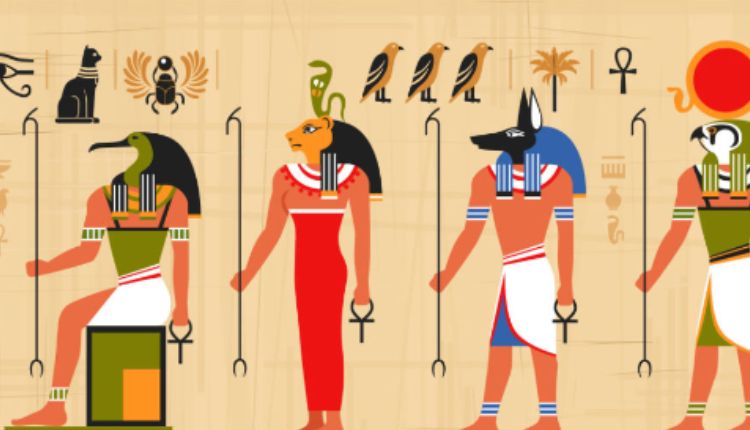Introduction:
The ancient Celtic religion, practiced by the Celtic peoples of Europe, holds a rich tapestry of beliefs, rituals, and deities that continue to captivate scholars and enthusiasts alike. Rooted in nature and spirituality, this unique polytheistic faith was prevalent among the Celts from the Iron Age until the spread of Christianity. In this article, we will delve into the fascinating world of the Celtic religion, exploring its core tenets, sacred practices, and the enduring legacy it has left on contemporary culture.
I. The Celtic Pantheon And Mythology
At the heart of the Celtic religion lies a diverse pantheon of gods and goddesses, each associated with specific aspects of nature and human life. The Celts revered their deities, attributing them with powers over fertility, war, craftsmanship, healing, and more. Among the most well-known Celtic deities are:
- Dagda: The all-father figure, known for his wisdom, abundance, and magical cauldron.
- Morrigan: A fearsome goddess of war and sovereignty, often depicted as a crow or raven.
- Brigid: Revered as the goddess of poetry, healing, and smithcraft, representing the triple aspects of fire.
- Cernunnos: The horned god of nature, fertility, and the underworld, embodying the essence of the forest.
These deities were not distant and aloof but rather closely connected to the daily lives of the Celtic people, inspiring rituals and festivals to honor and seek their favor.
II. Rituals And Festivals
The Celtic religion was deeply intertwined with the changing seasons and the rhythms of nature. The Celts celebrated a plethora of festivals throughout the year, marking significant points in the agricultural calendar and cosmic cycles. Some of the most prominent festivals included:
- Samhain: Celebrated at the end of October, marking the beginning of winter and the thinning of the veil between the worlds of the living and the dead.
- Imbolc: Held in early February, honoring Brigid and signifying the first stirrings of spring and the return of light.
- Beltane: Celebrated on May 1st, welcoming the warmer season and focusing on fertility and the union of male and female energies.
- Lughnasadh: Occurring in early August, dedicated to the god Lugh and celebrating the first harvest.
These festivals involved elaborate rituals, including bonfires, feasts, music, dance, and communal gatherings, fostering a sense of unity and spiritual connection among the Celtic communities.
III. Sacred Sites And Symbolism
The Celts held certain locations in high regard, attributing them with spiritual significance and divine presence. Sacred sites, such as hilltops, groves, and wells, were believed to be conduits between the earthly realm and the divine. The most famous Celtic sacred site is Stonehenge, located in modern-day England, which served as an astronomical observatory and a place of ritual and worship.
Celtic art and symbolism also played a crucial role in expressing religious beliefs. Intricate knotwork, spirals, and animal motifs adorned jewelry, weapons, and illuminated manuscripts. These symbols represented the interconnectedness of all life and the eternal cycle of birth, death, and rebirth.
IV. Impact Of Christianity
As the Roman Empire expanded, the influence of Christianity began to reach Celtic territories, leading to the gradual decline of the ancient Celtic religion. Missionaries, such as St. Patrick, played a significant role in converting the Celts to Christianity, often incorporating elements of Celtic beliefs into the new faith. Despite the shift to Christianity, some aspects of the Celtic religion endured, embedded in folklore, customs, and local traditions.
Conclusion:
The ancient Celtic religion remains a captivating subject of study and contemplation, offering a glimpse into the spiritual and cultural richness of an ancient civilization. Grounded in a profound reverence for nature and the interconnectedness of all life, this polytheistic faith fostered a profound sense of belonging and harmony with the world.
Today, the legacy of the Celtic religion endures through its impact on modern paganism, neo-druidism, and contemporary cultural expressions. The fascination with Celtic mythology, art, and spirituality continues to inspire artists, writers, and spiritual seekers, ensuring that the flame of the Celtic gods and goddesses burns brightly in the hearts and minds of those who seek to understand and appreciate this ancient tradition.
FAQs:
Q1: Are there any modern-day practitioners of the Celtic religion? A1: While the ancient Celtic religion is no longer actively practiced in its original form, some individuals and groups draw inspiration from Celtic mythology and spirituality. Contemporary pagan and neopagan movements often incorporate elements of the Celtic pantheon and practices into their belief systems.
Q2: How were Druids related to the Celtic religion? A2: Druids were the religious leaders, scholars, and advisors in Celtic society. They held a significant role in religious rituals, interpreting the will of the gods, and passing down knowledge through oral traditions. Druids were deeply connected to nature and played a crucial role in maintaining the spiritual and cultural fabric of Celtic communities.












